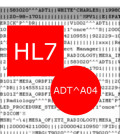What is a Vendor Neutral Archive (VNA)?
What is as Vendor Neutral Archive (VNA)?
Herman Oosterwijk, President, OTech Inc published a >>> white paper <<< that described and defined what a Vendor Neutral Archive (VNA) is. He also discussed some essential features and aspects of VNAs.
Although the White Paper was sponsored by TerraMedica, there weren’t any mentions of vendors or any other proprietary information.
If you are unfamiliar with VNAs or simply want to enhance and expand your knowledge in this subject area, the white paper will provide you with that information.
The first thing that may surprise readers is that a vendor neutral archive is not a standard of any kind. In fact, I imagine the term was invented by some company’s marketing team.
VNAs do not fit or conform to any sort of IHE standard, therefore much care must be given when doing vendor selection. Although VNAs are not a standard, they however use existing profiles and standard protocols such as DICOM, HL7 and XDS.
The term Vendor Neutral Archive gives the reader the impression that the archive will be able to fit in to any environment and work easily with minimal issues or integration challenges. This couldn’t be further from the truth. Integration is a critical factor in any implementation.
Some go smoother than others, however that is more to do with the flexibility and features of the software as well as the skill of the integration engineers. Also some healthcare organizations having varying requirements with different degrees of complexity.
One of the initial catalysts for a Vendor Neutral Archive was due to migration challenges organizations faced when moving from one PACS vendor to another. Although DICOM is a standard, it was clear with all of the image migration challenges that vendors had different interpretations of that standard. As a result PACS image migrations were long in duration, complex and expensive.
As the PACS market evolved, healthcare centers looked for ways to leverage their existing PACS infrastructure and share data. Other departments in the hospital also wanted to store and share data as well. What was needed was a configurable multi-function PACS server that could accommodate the various requirements from various healthcare departments.
With more departments and in some cases institutions wanting to store and share data, the level of complexity also increased. Traditionally each department was like a silo containing individual patient IDs and visit identifiers. In order to have a continuity of care and keep all of the data reconciled to the correct patient, more than a PACS server would be required. Patient IDs would need to be reconciled.
The paper mentions 5 distinct architectures, which deal with the challenges listed above, however I believe the last three architectures combined would be a closer vision of what most people feel a VNA is or should be.
There is a checklist at the end of the White Paper that readers can use when doing vendor selection or formulating a RFP









You must be logged in to post a comment Login